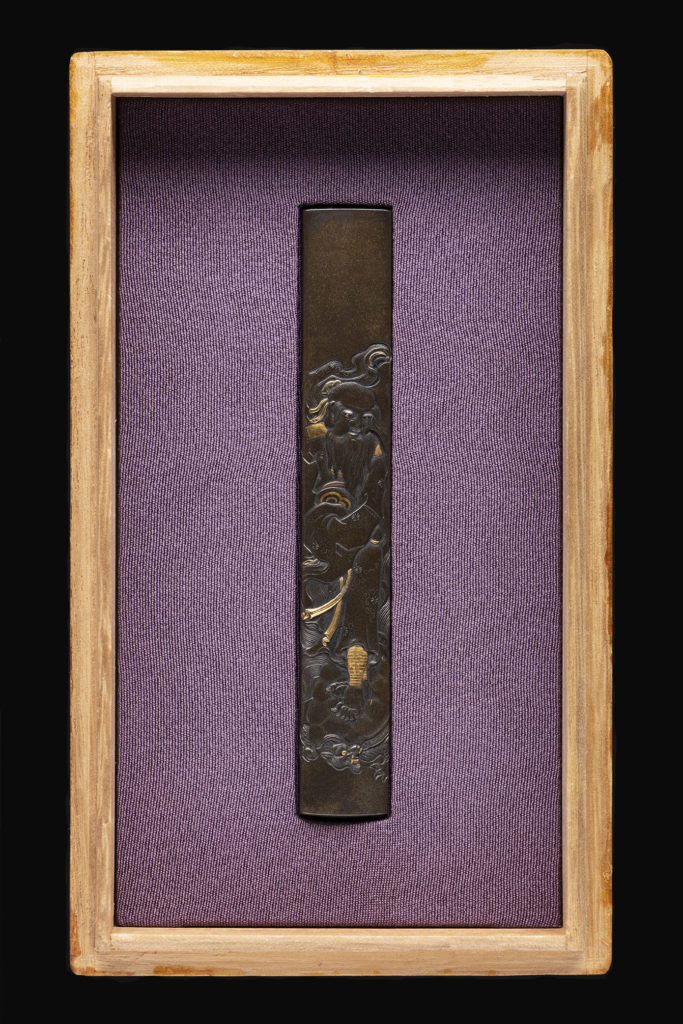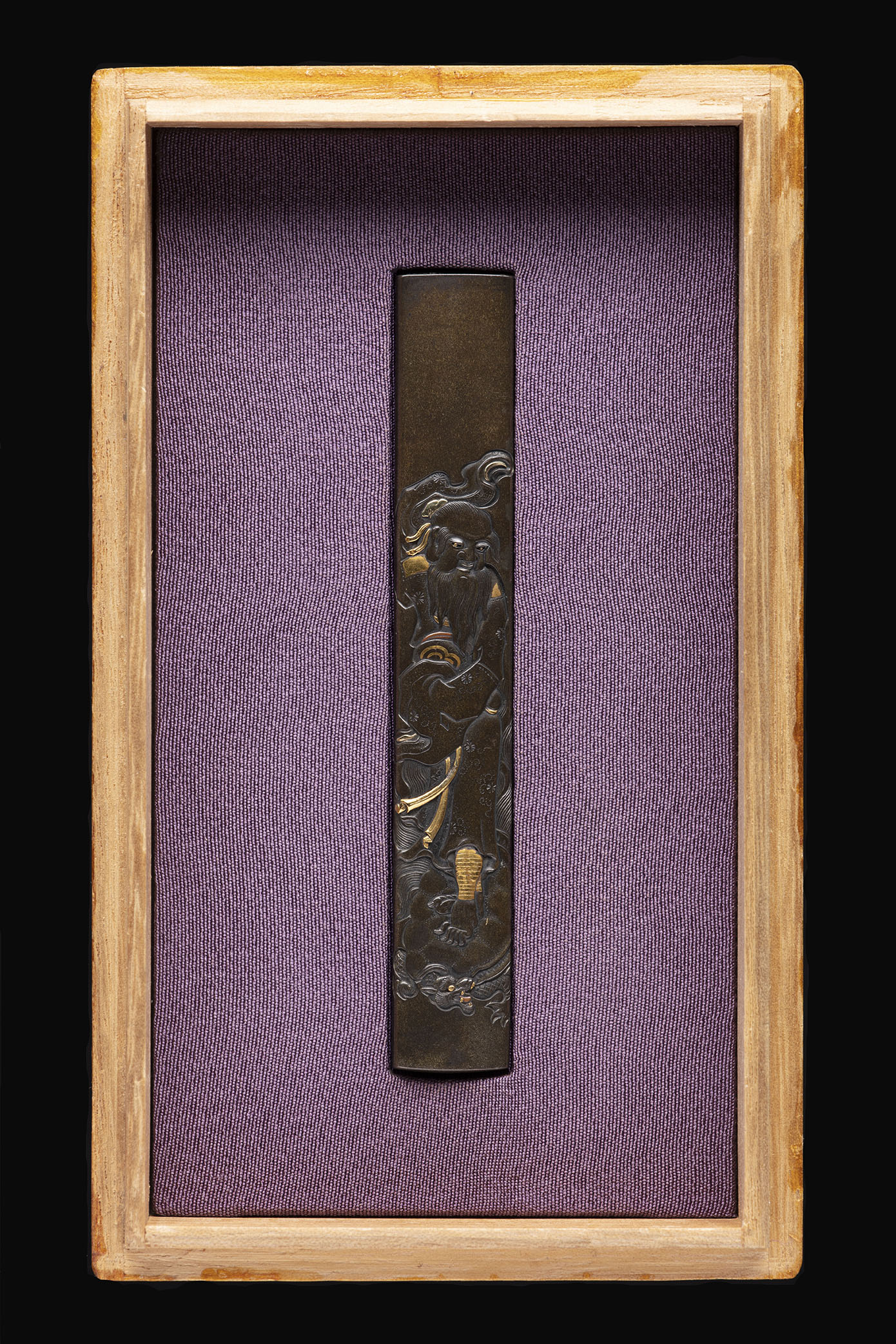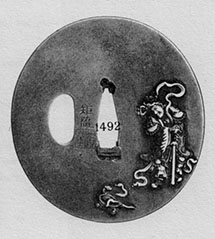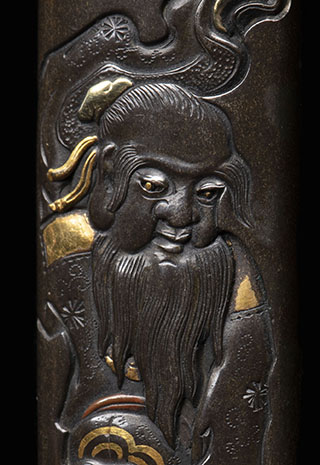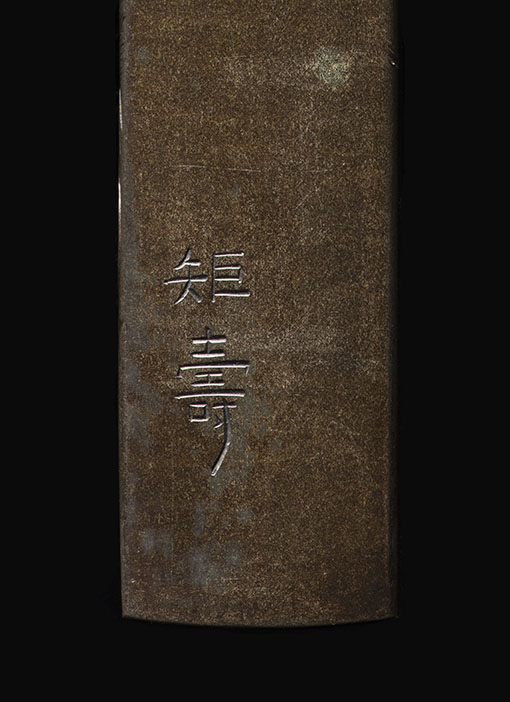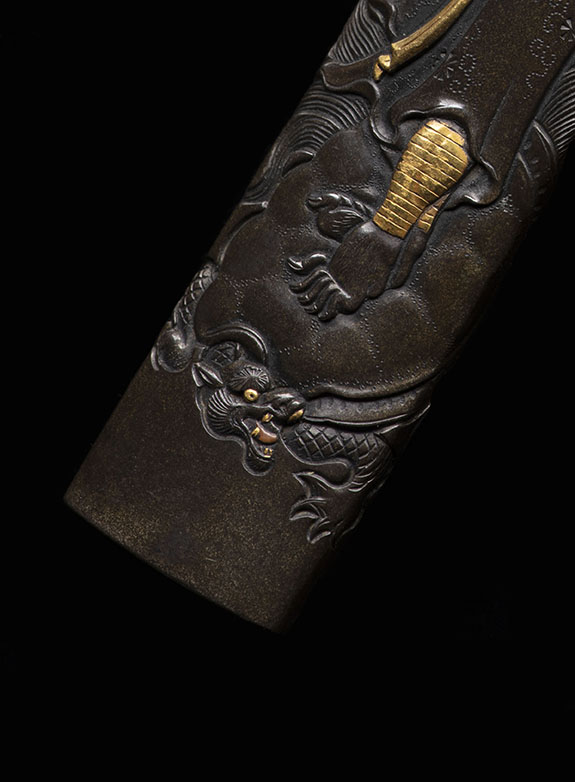Hamano School Kozuka
Superbly crafted and signed by Noritoshi
The origins of the Hamano School of fittings makers are best associated by the first-generation maker, Hamano Shozui, whom was a direct student of the revered Toshinaga of the Nara school. This relationship is important to understand as the Nara school itself, along with the Goto and Yokoya schools, are regarded as the three pillars of which all other schools emerged afterward. The Nara school’s three virtuoso, Nara Toshinaga, Sugiura Joi, and Tsuchiya Yasuchika, are regarded as the “Nara Sansaku” or “Three Great Masters of Nara”. When Shozui established the Hamano school, his works earned him consideration as the fourth great master to emerge from the Nara school.
The success of the Hamano school from Shozui continued through several generations in one mainline and two branch lines. One branch line was the Noriyuki line established by the Shodai Noriyuki, a direct student of Shozui. Noriyuki was succeeded by his either his oldest son, Matsujiro, which in one source states was his adopted son. It is also said that Noriyuki’s wife committed suicide and he subsequently forbade his students to work on the anniversary day of her death which would seem to define a heart-wrenching loss and devotion that may have hindered his desire to remarry and have children. So, the thought that his oldest son and heir to the craft would be adopted would seem logical. Matsujiro worked first under the name of Masakata and later assumed his father’s name as second-generation Noriyuki ten years after his father’s death.
Thus, we come to Noritoshi of which there is scant information, but the Haynes resource lists three signing in this way. All are regarded as working on the Hamano influence and the kanji used for Nori (矩) was is consistent usage with Noriyuki. Two have kao that are shown, and one has no kao recorded. The latter with unrecorded kao is noted to have been a student of Noriyuki, and this would point to the Nidai Noriyuki based on the timeline of work and the Shodai would have been long since passed away.
The subject expressed on this guard is that of Xuanwu, one of the principal Chinese Taoist Gods. He is often illustrated standing completely upon a turtle, or seated with his left foot on a turtle, and his right on a snake. There are quite a number of interlaced, diluted, and popular legends surrounding Xuanwu, and the emigration of Chinese mythology into Japanese culture only served to further elaborate and change imagery. The basic mythology of this is that Xuanwu was a prince of somewhat dubious character, that eventually expressed measures of redemption so that he was granted immortality. He is also often illustrated accompanied by two Generals, Wan Gong and Wan Ma, and they are occasionally referred to as the snake general, and the turtle general.
The turtle upon which Xuanwu stands is also referred to as the “black tortoise” and is representative in Japanese mythology to the direction North also. In Japanese mythology this black tortoise is called Genbu which refers not to the tortoise itself as much as a “black warrior”, with the context of “black” being more akin to “mysterious”. Further Japanese mythology points to the God Fukurokujin as being a part incarnation of Xuanwu, so the stories, myths, and interpretations thereof, abound. Take your pick.
There is a tsuba by Noriyuki with a theme of Xuanwu (Item 1492) shown in Henri Joly’s book, The Naunton Collection of Japanese Sword Fittings. The description of it says:
“Shibuichi, chased and inlaid in relief with Bishamon and the tortoise around which winds a snake. Signed: Noriyuki, seal Hamano. Dated Kayei, first year, mid-autumn.”
This is an understandable misinterpretation of the Naunton example subject, because at first glance Bishamonten and Xuanwu bear great resemblance in form, clothing, posture, and rulers of the North. Xuanwu is also occasionally depicted with a swordwhich by legend, he “borrowed” from the 9th century scholar and poet, Lü Dongbin, but when experiencing its power while dispatching some demons with it, he found himself unable to return it.
This rare Noritoshi kozuka is testimony of Hamano School traditions and mastery. Themes of gods, mythology, and legends were a favored theme in the Noriyuki line of makers, and this rare Xuanwu theme is executed in the comparatively larger subject composition which they gravitated toward. The plate is a warm toned shibuichi, with fine granularity visable throughout. The sculpting is wonderful, with soft, flowing motion, and fine detail elements. The face, and particularly the eyes, are superbly rendered to evoke a sympathetic yet stern expression. The overall condition is excellent and it would be a fine example of 19th Century Hamano workmanship for any collection.
SOLD
This piece has been issued an NBTHK Hozon Tosogu paper. However, the paper is inaccessible at this time and will be posted later as soon as it is retrieved. It is inclusive in the sale and will be forwarded to the buyer at earliest possible opportunity.
**Special thanks to Markus Sesko for his assistance in confirming the translation of the maker and assistance with the background of the maker.**
